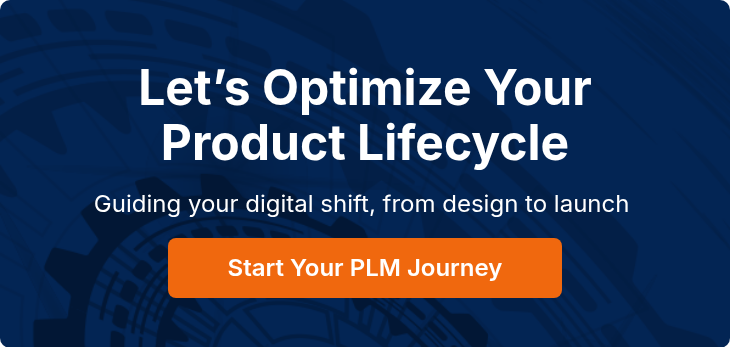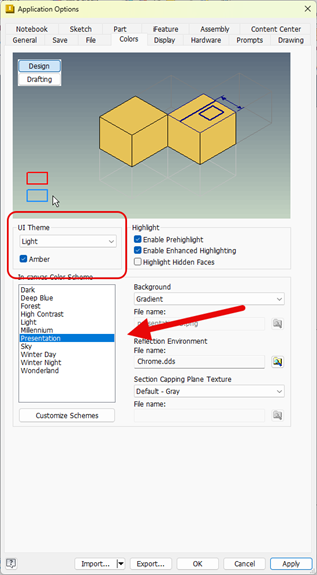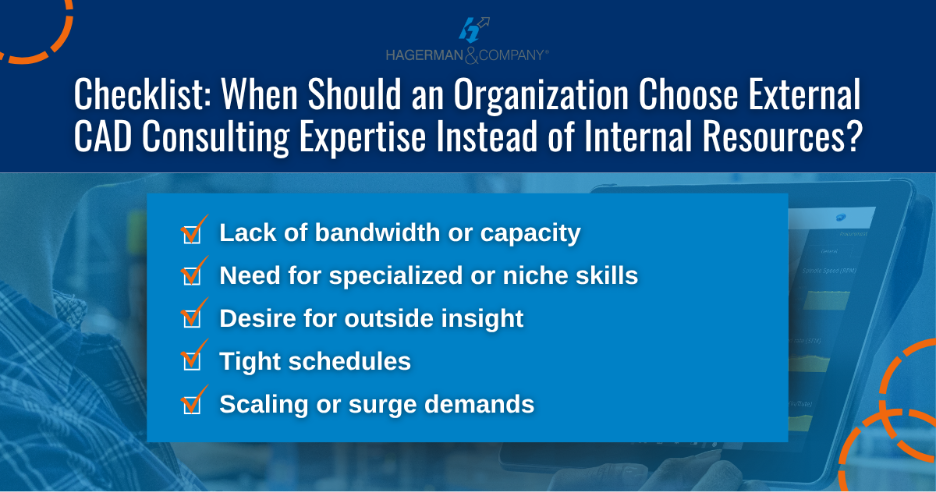Modern product development is more connected and more complex than ever. With growing product demands, global teams, and evolving customer expectations, manufacturers often find themselves juggling data across tools, teams, and timelines. When these elements aren’t well aligned, it can lead to delays, miscommunication, and missed opportunities.
Product Lifecycle Management (PLM) software helps bring order to that complexity. By connecting data, workflows, and people in a single system, PLM supports faster collaboration, better visibility, and smarter decision-making at every stage of development. It empowers teams to move more efficiently from concept through design, manufacturing, and launch without reinventing the wheel at each step.
In this article, we’ll explore how PLM software, particularly through an integrated Autodesk PDM and PLM approach, serves as a digital backbone for modern manufacturing. We’ll start with the foundational role of Product Data Management (PDM), then follow the product journey through key lifecycle stages to show how PLM brings clarity, speed, and alignment to the entire process.
Establishing the Digital Backbone: From Data Chaos to a Single Source of Truth
At the heart of any successful digital transformation is the ability to connect people, data, and processes. This starts with understanding the complementary roles of PDM and PLM. Though distinct in function, the two work in tandem to streamline how products are developed, reviewed, approved, and released.
PDM focuses on the “what” by managing engineering data like CAD models, drawings, and specifications. It ensures accuracy, access control, and a single source of truth across design teams.
PLM focuses on the “how” and “why” by extending beyond engineering to manage enterprise-wide processes such as change orders, quality management, and collaboration across departments.
Together, they form the digital backbone of product development. PDM ensures control and structure at the engineering level, while PLM connects those details to the broader business strategy. The result is a unified system that supports faster, more informed decisions throughout the entire product lifecycle.
| Attribute | PDM (Autodesk Vault) | PLM (Autodesk Fusion Manage) |
| Primary Focus | Managing and controlling product data | Managing and automating business processes |
| Scope | Typically departmental | Enterprise-wide |
| Key Users | Engineers, Designers, Drafters | All product stakeholders, including non-CAD users and external suppliers |
| Core Functionality | Version/Revision Control, Secure Access, Data Reuse, CAD Integration | Workflow Automation, Change Management, BOM Management, Quality Management, Supplier Collaboration |
| Primary Business Goal | Eliminate design errors, reduce rework, and protect intellectual property | Streamline enterprise operations, reduce time-to-market, and improve cross-functional collaboration |
Autodesk Vault as the Bedrock of Control
As the foundation of a strong PDM strategy, Autodesk Vault replaces fragmented file systems and manual processes with a centralized, secure environment for managing design data. It brings structure and visibility to engineering workflows—ensuring the right data is accessible to the right people at the right time.
Core capabilities include a centralized data repository, version and revision control, secure concurrent access, and direct CAD integration. With Vault, engineering teams gain clarity, confidence, and control—eliminating redundancy, reducing errors, and accelerating collaboration.
By serving as the trusted foundation for design data, Vault enables the broader PLM system to function effectively, ensuring that every downstream process is informed by accurate, up-to-date information.
The Product Development Lifecycle in Motion: A Stage-by-Stage Analysis
Bringing a product to market is a complex, collaborative effort that spans multiple teams and systems. Internally, the journey from concept to launch involves much more than design and production; it requires structured workflows, data consistency, and cross-functional alignment. This section explores how Autodesk Vault and Fusion Manage support each stage of that journey, helping teams work smarter and move faster from idea to reality.
Stage 1: Ideation & Concept Development
At the start of any product initiative, ideas are often unstructured and scattered across conversations, documents, or emails. Capturing and evaluating these early-stage concepts in a consistent way is essential for aligning innovation with business goals.
Fusion Manage offers a centralized approach to managing ideas and gathering requirements. Teams can collaborate in real time, evaluate concepts with clarity, and ensure that the right opportunities move forward with full context and visibility.
Stage 2: Design & Engineering
As ideas transition into detailed designs, engineering teams must work together efficiently, often across disciplines or locations. Managing iterative design work, avoiding data conflicts, and tracking changes are critical at this stage.
Autodesk Vault enables concurrent design by allowing multiple engineers to safely work on the same assemblies, with full version and revision control. Its intelligent search capabilities also help engineers quickly find and reuse existing components, reducing duplication and accelerating development.
Meanwhile, Fusion Manage brings structure to the change process by automating Engineering Change Requests (ECRs) and Engineering Change Orders (ECOs). This ensures every modification is documented, approved, and traceable from start to finish.
Stage 3: Prototyping & Manufacturing Handoff
Bridging the gap between digital design and physical production often introduces risk, particularly when key data like Bills of Materials (BOMs) are managed manually. Errors here can lead to costly delays during prototyping or manufacturing.
Autodesk Vault helps avoid this by generating CAD-driven BOMs directly from design data, ensuring accuracy and consistency. Fusion Manage extends visibility to the rest of the organization, allowing non-CAD users to access live BOM information without needing direct access to engineering files.
For even greater efficiency, Vault and Fusion Manage can be integrated with ERP or MRP systems—automating the transfer of BOM data to production and reducing the need for manual updates.
Stage 4: Supply Chain & Quality Management
As products move closer to production, effective supplier collaboration and proactive quality processes become increasingly important. Without the right systems in place, teams may struggle with miscommunication, delays, or inconsistent quality standards.
Fusion Manage supports supplier collaboration through a secure portal that allows partners to view specifications, respond to quotes, and participate in workflows—all in real time. On the quality side, integrated modules for CAPA, FMEA, and SCAR help digitize and connect quality management activities, making it easier to identify root causes and implement corrective actions.
Stage 5: Launch & Post-Launch
Product launch involves tight coordination across marketing, operations, engineering, and support teams. Just as important is the ability to capture post-launch feedback and turn it into actionable insights for future improvements.
Fusion Manage supports launch readiness through robust New Product Introduction (NPI) project management tools, enabling teams to plan, execute, and track launch tasks with clear accountability. After release, feedback can be captured and linked back into the product record—creating a continuous improvement loop that informs the next iteration.
From Technology to Transformation: The Value of an Implementation Partner
Implementing a PLM system is a foundational step in digital transformation—not simply the deployment of new software, but a shift in how product development is managed across the organization. To realize the full value of PLM, this transformation must be approached strategically, with the right planning, execution, and support. That’s where the expertise of a solutions partner like Hagerman & Company becomes essential.
The process begins with a comprehensive needs analysis and process review. This step is focused on uncovering a company’s unique challenges, mapping existing workflows, and identifying operational bottlenecks. It ensures the selected solution is tailored not just to technical requirements, but to the organization’s actual day-to-day needs and long-term goals.
Once the foundation is established, expert implementation is paired with careful data migration. Migrating legacy data into the new PLM environment is a critical task—requiring precision to preserve file relationships, part references, and revision histories. A well-managed migration minimizes disruption and ensures teams have access to the information they need without delays or confusion.
Equally important is system integration. Connecting the PLM platform with core business systems such as ERP or MRP allows for an automated, bi-directional flow of data between engineering and the rest of the enterprise. This not only improves operational efficiency but also helps create a seamless digital thread from concept through production.
Finally, long-term success depends on user adoption. Even the most advanced systems can fall short without proper training and support. Hagerman provides structured onboarding programs, hands-on training, and responsive support services to help teams get comfortable with new tools and processes. With the right foundation and ongoing enablement, organizations can maximize their investment and fully realize the benefits of PLM.
Activating Your Product Development Future
Streamlining product development isn’t accomplished through isolated tools or one-time fixes. It requires a connected, scalable foundation that brings teams, data, and processes together in a unified environment.
By establishing a strong PDM backbone with Autodesk Vault and building upon it with an enterprise PLM system like Autodesk Fusion Manage, manufacturers can create a fully integrated workflow that supports innovation from concept to launch. This connected approach helps reduce time-to-market through improved collaboration and faster decision-making.
It also enhances product quality by providing consistent data and enabling closed-loop change management. At the same time, automated workflows and system integrations help streamline operations and reduce overall costs.
Ultimately, the success of a PLM initiative depends not just on the software, but on the expertise of the partner who helps implement it. With the right guidance, organizations can unlock long-term value and navigate the complexities of modern product development with confidence.
Take the next step to conquer the complexity crisis. Contact Hagerman & Company today!





Comments